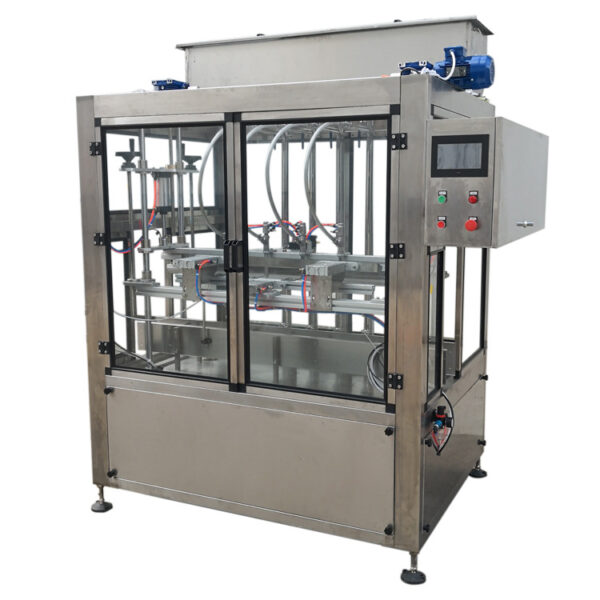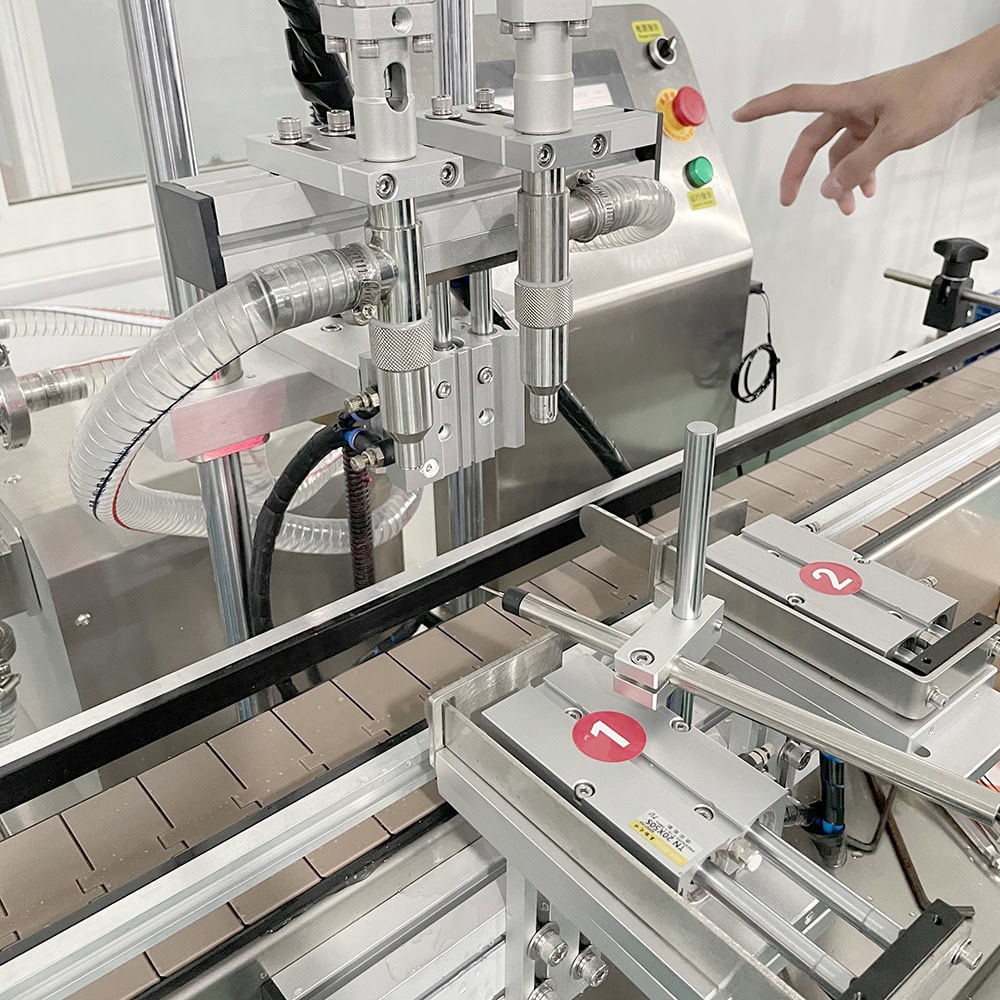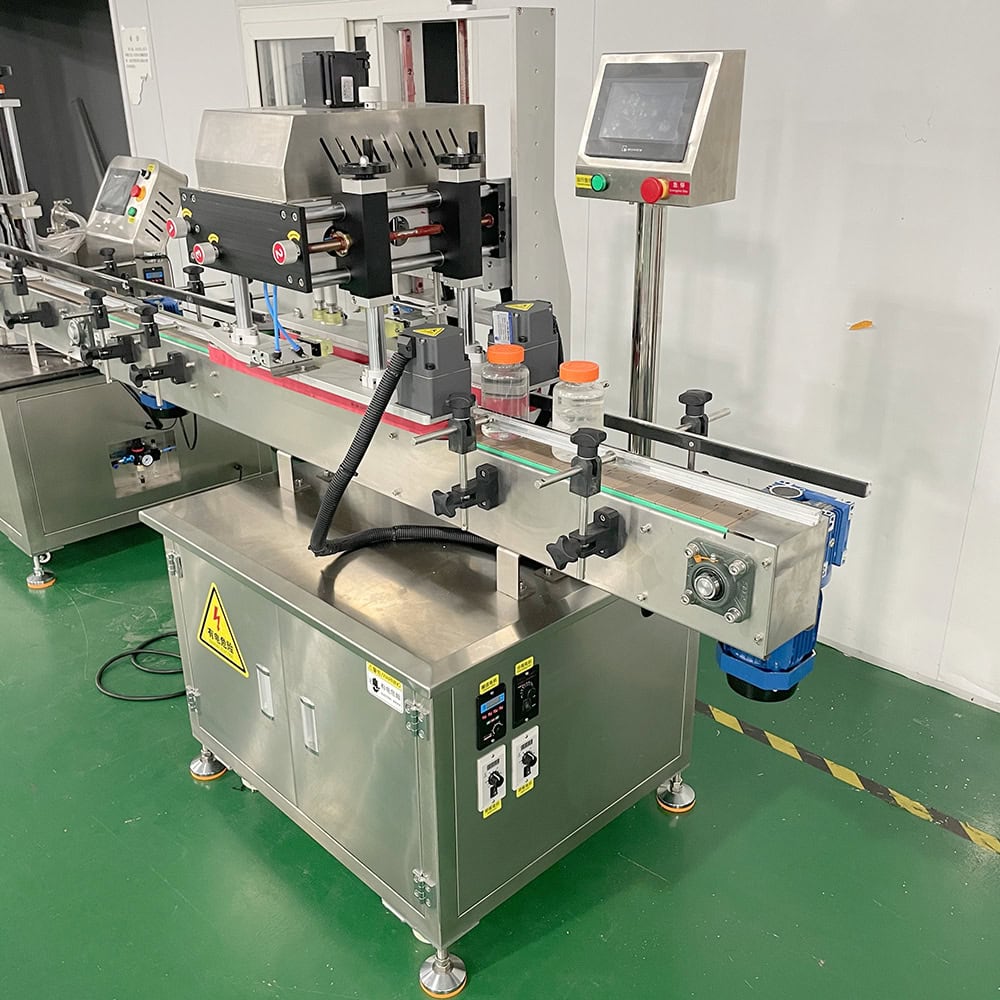In the industrial sector, especially in food, beverage, and pharmaceutical manufacturing, questions about material composition of machinery—such as filling machines—are common. Misunderstandings about these machines’ construction can lead to doubts regarding durability, hygiene, and maintenance requirements. This article explores whether filling machines are entirely made of stainless steel and the practical implications of material choices.
No, while essential components in contact with products are stainless steel, other parts may use different materials for structural efficiency.
Continue reading to understand why stainless steel is commonly used, where alternative materials might appear, and how this impacts performance and longevity.

Why Stainless Steel is Essential in Filling Machines
Stainless steel is a preferred material for filling machines due to its corrosion resistance and hygienic properties. This metal’s unique characteristics are especially important in food, beverage, and pharmaceutical industries, where product purity and hygiene are crucial.
- Corrosion Resistance
Filling machines handle liquids and semi-liquids, which may lead to material corrosion over time. Stainless steel’s natural resistance to rust and corrosion ensures longevity and consistent machine performance. 316 stainless steel is often used in machines exposed to highly acidic or salty substances, further extending their useful life. - Hygienic Properties
Stainless steel has a smooth, non-porous surface that inhibits bacterial growth, a key factor in meeting hygiene standards for food, beverage, and pharmaceutical applications. Additionally, it’s easy to clean and sanitize, making it ideal for environments that require sterile processes. - Strength and Durability
Stainless steel is incredibly durable, providing stability for high-speed operations, like those seen in liquid filling machines. This durability ensures the machine withstands regular cleaning and intensive use.
Main Parts of a Filling Machine Made of Stainless Steel
Key parts of filling machines are generally made from stainless steel to maintain hygiene and prevent contamination. Below are the main components that typically use stainless steel:
- Product-Contact Parts
All parts of a filling machine that come in direct contact with the product, such as nozzles, tubes, and filling valves, are often made from stainless steel. This prevents contamination and ensures compliance with industry hygiene standards. - Frames and Casings
Stainless steel frames provide durability, support high-speed operations, and resist impact and wear. Casing parts also use stainless steel for easy cleaning, making it possible to maintain hygiene standards over extended machine use. - Piping and Valves
The internal piping and valves of filling machines are crucial to the overall process and are made from stainless steel to ensure no rust or corrosion contaminates the product.
For applications that need extra durability, such as those handling aggressive cleaning agents, certain machines might use specialized alloys of stainless steel. Machines like the bottle filling machine prioritize high-quality stainless steel for these internal parts.

Other Materials Commonly Used in Filling Machines
While stainless steel is the standard for contact points and structural components, other materials like aluminum and plastic are also used to enhance efficiency and reduce costs:
- Aluminum and Acrylic
Non-contact parts, like external covers and framework components, are often aluminum or acrylic. These materials are lightweight and cost-effective, making them ideal for reducing the overall machine weight without compromising durability. - Rubber and Plastic Components
Seals, gaskets, and grips in filling machines are often made from high-quality rubber or plastic. These materials are not in direct contact with the product but are essential for noise reduction and maintaining pressure in certain areas.
Using alternative materials for non-contact parts makes the filling machine more cost-effective without compromising product safety or machine longevity.
Types of Stainless Steel Used in Filling Machines
Different grades of stainless steel are used depending on the machine’s application and the type of product it handles:
- 304 Stainless Steel
Known for its excellent corrosion resistance, 304 stainless steel is commonly used for most filling machine parts, especially those in environments with moderate exposure to acidic or salty substances. - 316 Stainless Steel
This grade offers enhanced resistance to corrosion and is typically used in machines handling particularly acidic, salty, or corrosive products. 316 stainless steel is more expensive than 304 but provides higher durability, making it a preferred choice in demanding applications like food tray packaging machines.
Importance of Stainless Steel in Maintaining Hygiene Standards
Maintaining hygiene is crucial for machinery in industries that handle consumable products. Stainless steel meets these standards due to its non-porous, smooth surface that resists bacterial buildup. This is why industries with high hygiene requirements, such as liquid filling machines used in beverage production, rely heavily on stainless steel in product-contact areas.
Beyond hygiene, stainless steel allows for easier compliance with stringent health and safety regulations, an essential aspect in food and pharmaceutical manufacturing.

Economic Considerations: Cost of Using Full Stainless Steel
While using stainless steel for an entire machine ensures durability and hygiene, it can be costly. Manufacturers often balance these costs by using stainless steel selectively:
- Stainless Steel in Key Areas: Product-contact points and structural frames generally use stainless steel.
- Alternative Materials Elsewhere: Aluminum and plastic may be used in non-critical areas to make the machines more affordable while maintaining durability.
This balance keeps filling machines affordable for more businesses without sacrificing quality.
How to Determine the Stainless Steel Composition of a Filling Machine
To know the materials used in a filling machine, consider the following steps:
- Product Specifications
Review the machine’s product documentation, which usually lists the materials used for each part. Companies like LabeMachine provide detailed specifications for machines like the customized labeling machine and others, allowing buyers to make informed decisions. - Inspection and Testing
Testing methods such as magnetic testing or visual inspections can verify whether certain machine parts are stainless steel. Consult with the manufacturer to confirm specific details if needed.
Other Industries Using Stainless Steel in Machinery
Stainless steel’s durability, corrosion resistance, and hygiene benefits make it widely used across many industries beyond filling:
- Food and Beverage Processing: Used in packaging machines and bottle filling machines to maintain hygiene and durability.
- Pharmaceutical Manufacturing: Essential in capsule filling and liquid filling machines to ensure sterility and meet regulatory standards.
- Medical Equipment: From surgical tools to lab equipment, stainless steel is a cornerstone in maintaining hygiene and durability.
Conclusion
Filling machines are primarily constructed from stainless steel in key areas to ensure durability, hygiene, and regulatory compliance. However, to balance costs, alternative materials like aluminum and rubber are often used in non-contact areas.









